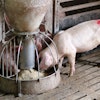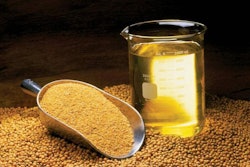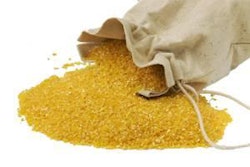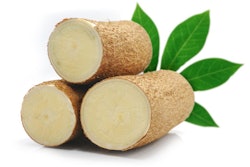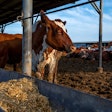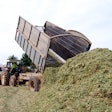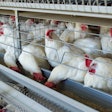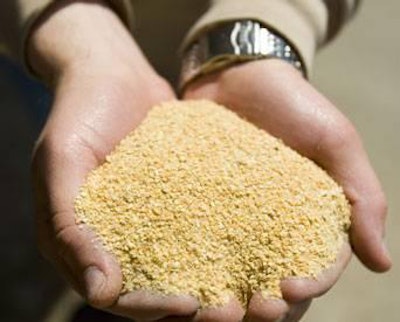
Finding a balance between normal soybean meal and its more refined forms is essential for modern broiler super pre-starter feeds.
A typical diet for very young broiler chicks contains an exceptionally high level of soybean meal, often of the lower (44%) protein concentration. Adding 30% soybean meal in modern starter broiler feeds (first week post-hatch) is thus considered normal.
In contrast, feeds for equally immature piglets (first week post-weaning) are seldom formulated with such high levels of normal soybean meal as these animals suffer from allergic reactions to soybean proteins in addition to the typical problems associated with the anti-nutritional factors in this protein source. It is not as if broilers are more resistant to the same problems, and this has been recognized lately with the introduction of the super pre-starters fed during the first few days post-hatch.
Still, soybean protein remains the main source of amino acids because it is the least expensive, even in modified forms. These modified forms that appear to better suit the digestive system of the very young chick are described briefly below. They do not replace all of the normal soybean meal, due to cost, but they decrease any negative impact from high levels of normal soybean meal.
-
Soy protein concentrate and isolate
Of the two, the first is the least offensive as it has its storage proteins largely deactivated in terms of allergic reactions. Although it contains less protein (around 60%) and thus more non-protein compounds, it is more available in the market and significantly less expensive per unit of protein than isolate. The latter is a super concentrated (80-90%) source of protein with very little in terms of anti-nutritional factors, such as non-starch polysaccharides, but with full allergenic potency due to differences in the extraction processes.
-
Enzymatically treated soybean meal
Although the methods with which normal soybean meal is treated with enzymes remains a well-kept industry secret, the results are obviously in favor of such material, even though the cost per unit of protein is substantial. Of course, as with any modified product, there are different qualities in the market, some of which offer better value despite being less well marketed than others. Efforts to copy these products are often met with significant failure.
-
Genetically modified or improved soybeans
In the past, there were major efforts, especially in the U.S., to produce soybean varieties low in allergenic proteins and/or anti-nutritional factors. These scientific efforts succeeded and filed research verified their great potential in terms of animal feeding. However, for several reasons outside the scope of this presentation, these soybean varieties never found commercial application – at least at large enough scale to make an impact in the global market.
-
Fermented soybean meal
This is another obscure product, not so much as how it is produced (a single yeast ferments soybean meal – something done in Asia for centuries), but on how it affects the nutritive, allergenic, and anti-nutritional factors in soybean meal. Quality can vary widely and there are many different products on the market. Good quality product – but how we define quality remains controversial – can offer real benefits, but without quality results can be disappointing. Trial and error remains the best way to test available commercial products.
-
Extruded full-fat soybeans
These are considered by some nutritionists as more tasty – they contain more oil and they are cooked more thoroughly – than normal soybean meal, but this depends largely on the manufacturing settings. High-quality extruded beans can replace all of soybean meal and offer additional benefits in terms of added oil that remains largely protected in undisrupted cells. Plus, it is a bonus in cases where facilities to add oils and fats do not exist at the mixer level. The allergenic properties and anti-nutritional factors of extruded soybeans are not altered significantly compared to good quality soybean meal, but not all nutritionists agree with this statement.
From the above products, once a suitable candidate is identified, a 10% inclusion rate is usually enough to make the final feed too expensive, no matter its positive impact on young birds. Not that higher levels would cause any harm – the opposite is true – but there is a limit on how much we can ask from an industry that has such low margins per bird. On the other hand, seen as an investment, broiler super pre-starters can offer a boost up to 10% in lifetime performance.

